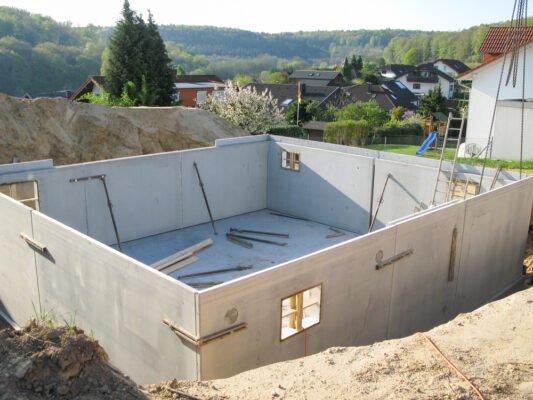What is a pucca house?
A pucca house, also referred to as pakka house, refers to the kind of houses that are designed to be permanent and solid. The roof and walls of a pucca house are made from durable materials like cement concrete, burnt bricks, jack board, timber or stone.
What is a Kutcha house?
A kind of house, where the walls are made up of bamboo, mud, grass, reed, stones, thatch, straw, leaves, and unburnt bricks, is known as a kutcha or kachcha house. These are not permanent structures or pucca houses like flats or buildings or even semi pucca houses. Kutcha houses or temporary houses examples are usually seen in rural areas or in cities as make-shift homes.
See also: Details and studio apartment meaning
Kutcha houses in India as per Census 2011
The highest percentage of ‘good’ houses or pucca houses in 2011, according to that year’s census, was in Goa (76%) and the least number of these pucca houses was in Odisha (29.5%). However, at 5.4% which was the national average, dilapidated houses also featured in the Census 2011. West Bengal had the highest number of dilapidated houses in 2011 and Goa, the least with only 1.5%. Census 2011 also featured pucca house, semi pucca house and kutcha house, for example -hut. Of these, the last two categories- semi pucca house and kutcha house together made up for 48% of the houses.
However, there was a wide difference between rural and urban areas, in housing stock in 2011. The difference was as much as 33% in pucca house, 20% in semi pucca house, 13% in kaccha house and 7.8% in serviceable and 5.2% in non-serviceable kaccha houses.
See also: Flat vs House: Which is better?
Types of Kutcha houses
Depending upon the kutcha house materials used, there are different types of kutcha house. However, they constitute a semi pucca or a kaccha house example, running the risk of destruction owing to floods, cyclones, earthquakes and other natural disasters and security threats due to crime.
know about: artificial grass wall
Kutcha house: Materials used
Here are some of the commonly-used materials, for building kutcha houses:
- Unburnt bricks
- Bamboos
- Mud
- Grass
- Reeds
- Thatch
- Loosely packed stones
Kutcha house: Amenities
Those living in kacha houses often struggle for basic amenities, such as access to clean water, 24/7 electricity, bath/toilet facility at home or even LPG/PNG in the kitchen.
See also: What are penthouses?
Difference between kutcha house and pucca house
| Kutcha house | Pucca house |
| They are made of easily available kutcha house materials like mud, straw, stones or wood. | Pucca house materials include iron, bricks, cement, steel, etc., to form a concrete structure. |
| Kacha house are owned by the economically/financially handicapped sections. | Pucca house owners are above the poverty line. |
| Kacha house are unstable structure, often run the risk of being damaged by natural disasters or criminal actions. | Meaning of Pucca house is that they are stable. Concrete Pucca house cannot be broken into easily. |
| Kuchcha house are often built as makeshift accommodations as compared to pakka house | Permanent houses are counted as an investment. |
| Kuchcha house owners have very basic amenities | Pukka house Owners/residents enjoy amenities as per their income standard. |
| In kuchcha house, room demarcations may or may not be present. | Rooms are demarcated and there are dedicated bedrooms, hallways, living rooms, kitchens and baths, in such pukka house units. |
Also read: All about PMAY-Gramin in India
Kutcha house Benefits
People in rural regions like kutcha houses, especially ones built of mud, since they offer several significant advantages.
Durable, Strong and Waterproof
Mud-brick construction could be a long-lasting and sturdy option for the walls and flooring of Kutcha homes if they are stabilised. Mud-brick construction is very sturdy and disaster-proof. This is quite likely to remain intact for several decades despite being subject to earthquakes and floods. Even though the Kutcha huts are made of mud, they might be problematic during wet seasons.
These barriers can be addressed during the building project. Several stabilisers, including straw, grain fibre, agricultural runoff, and gypsum, can be utilised to prevent damage of any kind. Mud-built homes never deteriorate because they are so well maintained.
Recyclable
The idea of recycling has recently become the new catchphrase for attaining sustainable development in the modern day. Before modernisation started, mud houses provided refuge for millions of people for several centuries.
When the mud houses are destroyed, they can be recycled or used again. The building materials for Kutcha dwellings are always recyclable, and the mud is simple to reintroduce to the environment. The ecologically friendly materials utilised to build Kutcha homes can drastically lower the construction cost.
Carbon footprint
The cement industry is responsible for around 8% of all worldwide carbon dioxide emissions. As cement developed into a reliable substitute for mud in the 21st century, it quickly became the material of choice for many architects. Mud, on the other hand, has a relatively small carbon footprint since it can be recycled and extracted from the earth.
Kutcha house: Advantages
Kutcha house, especially those made of mud, have several significant benefits and hence, are preferred by people in rural areas.
- Cost effective: Constructing pucca houses or even semi pucca houses would require more resources and most people cannot afford them. The cost of repairing kutcha houses is also lesser than pucca houses that make it more affordable.
- Provides insulation: Kutcha houses, because of the raw materials used, provide thermal insulation. Thus, they keep the interiors warm during cold winters and people can avoid installing heaters.
- Biodegradable: Kutcha houses are eco-friendly and biodegradable, since these houses use natural materials like clay, hay and other items. They do not cause pollution as they do not use artificial items like plastics, chemical paints, etc.
Kutcha house: Disadvantages
- Unstable: Kacha houses are unstable as compared to pucca house or even semi pucca house and can be broken or damaged easily by floods, storms or other natural disasters.
- Non-durable materials: Kutcha houses need to be repaired often, because they are made of materials that wear off very easily. For example, the kacha house dwellers may need to replace the thatched roofs of repair other parts of the house that do not last long.
Know the terms
Here are some of the commonly used terms you should know about.
Institutional household
A place where a group of unrelated persons live in an institution and take their meals from a common kitchen, is called an institutional household. Examples include boarding houses, messes, hostels, hotels, rescue homes, jails, ashrams, orphanages, etc.
Houseless households
Households who do not live in buildings or census houses but live in the open on the roadside, pavements, in hume pipes, under fly-overs and staircases, or in the open in places of worship, mandaps, railway platforms, etc.
Caravans
Houses on wheels, or those that can be moved from one place to another, are called caravans. Although these have all the facilities of a house, they come under the kutcha house category, because they are temporary lodging facilities.
Features of caravans
- Movable houses: As the definition of caravans suggests, they are movable houses. These kutcha houses are mainly used by gypsies to travel from one place to another.
- Proper ventilation: Most caravans have plenty of windows for enough ventilation.
- Adequate internal and external storage: Since caravans are movable kutcha houses, they have sufficient internal and external storage to accommodate the necessary items of the travellers.

Stilt houses
These belong to the kutcha house segment and are constructed on piles or stilts on the soil surface or on water bodies. They are mostly made of kutcha house materials like bamboo and have slanting roofs to allow water run off. These kutcha houses are prevalent in flood-prone areas as they protect against flooding.
Features of a stilt house
- Built in areas prone to heavy flooding: The main purpose of stilt houses is to protect the residents and the house from flooding. Thus, the kaccha house are built on stilts to avoid such natural disasters.
- Efficient drainage system: Another point to note about kutcha house like stilt houses is that they are located in flood-prone areas, they have an excellent system of drainage apart from being mounted on stilts so that the excess water can be drained from the interior of the house.

See also: All about stilt houses including stilt house materials used in India
Independent houses
One which has a separate structure and entrance with self-contained arrangements, such as living rooms, kitchens, bathrooms, latrines, store-rooms and verandas (open or closed). These pucca house are made of sturdy materials that increase the durability of the structure. They cannot be moved from one place to another and remain fixed in a specific area. Among the 10 materials used in building a pucca house include iron, cement, bricks etc.
Pucca houses
A pucca house is one, which has walls and roof made of burnt bricks, stones (packed with lime or cement), cement concrete, timber, etc. and the roof material may be tiles, GCI (galvanised corrugated iron) sheets, asbestos cement sheet, RBC (reinforced brick concrete), RCC (reinforced cement concrete) and timber, etc.
Semi pucca house
A house that has fixed walls made up of pucca material but the roof is made up of the material other than those used for pucca houses. Semi pucca house roofs are generally made of hay, while their exterior walls are built with concrete. Thus, these houses are stronger than kutcha houses but weaker than pucca houses. The amenities in these houses are also more than that in kutcha houses. However, semi pucca houses have lesser amenities and features than pucca houses.

Flats
A part of a building with one or more rooms, with self-contained arrangements and normal housing facilities like water supply, latrine, toilet, etc., which are used exclusively by the family residing therein or jointly with other families. A flat provides several people living in the same tower but in different accommodations. Thus, while individuals have their own rooms, kitchens and bathrooms as a distinctively separate unit, they also share common passages with other residents living in the same tower.
Also read all about GST on construction materials
Slums
Compact areas of at least 300 population or about 60-70 households of poorly built congested tenements, usually with inadequate infrastructure and lacking in proper sanitary and drinking water facilities.
Igloo
These houses are also known as snow houses or snow huts. Igloos are found in Greenland and the Arctic region of Canada. People who live in Igloos are called Eskimos. Igloos are made of snow and ice blocks. Although they are made of ice, they are warm inside.

Houseboats
In India, houseboats can be found in the Dal Lake in Kashmir and in Kerala. Such boats have all the facilities of a house but can sail from one place to another. These are mostly used as sources of tourist attractions but are also occasionally inhabited by the locals.

Prefab homes
Prefabricated homes are specialist dwelling types of buildings, which are manufactured off-site in advance, usually in standard sections that can be easily shipped and assembled. Most developers choose the prefab type of construction. For instance, Cidco used the advanced precast technology under ‘Mission 96’ and constructed a 12-storey building with 96 flats in 96 days at Bamandongri, Navi Mumbai. Cidco started the construction on April 4, 2022, and the construction was completed on July 9, 2022. After this feat, Cidco is regularly using prefab technology for construction of buildings under its Mass Housing Scheme.

FAQs
Does PMAY-Gramin offer homes to kutcha house dwellers?
Yes, units under the PMAY Gramin are meant for those who cannot afford a property on their own and are living in kacha house, with little or no access to basic amenities.
Are there kutcha houses in Indian cities?
There are fewer kutcha houses in cities but these are not altogether uncommon. Often, people build makeshift houses in cities’ peripheral areas.
Who lives in a kutcha house?
People who live in kutcha houses are generally those who live in a place for a short period of time, or people who cannot afford a pucca house.
Can you provide me with any illustrations of Kutcha houses?
The greatest examples of Kutcha housing include tents, caravans, houseboats, and mud structures.
What type of individuals often reside in Kutcha houses?
The inhabitants of Kutcha homes are individuals who often only stay in one place for a brief period.
Why are Kutcha homes not long-lasting?
The typical materials used to construct Kutcha homes include bamboo, straw, seeds, and mud, but with time, they are unable to withstand the whims of the weather. They are not particularly sustainable as a result.
| Got any questions or point of view on our article? We would love to hear from you. Write to our Editor-in-Chief Jhumur Ghosh at [email protected] |

With 16+ years of experience in various sectors, of which more than ten years in real estate, Anuradha Ramamirtham excels in tracking property trends and simplifying housing-related topics such as Rera, housing lottery, etc. Her diverse background includes roles at Times Property, Tech Target India, Indiantelevision.com and ITNation. Anuradha holds a PG Diploma degree in Journalism from KC College and has done BSc (IT) from SIES. In her leisure time, she enjoys singing and travelling.
Email: [email protected]
















